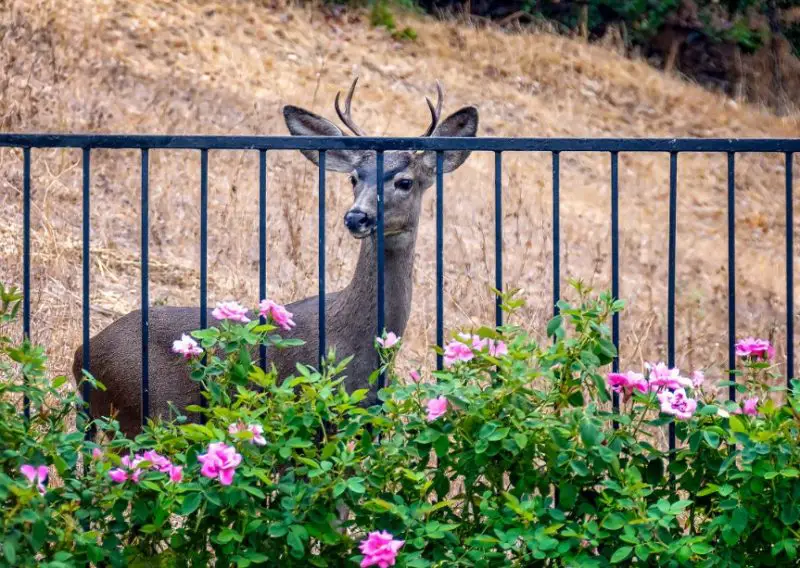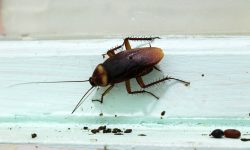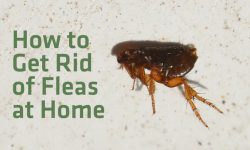Deer are undoubtedly beautiful and majestic creatures, but when they decide to treat your garden, berry patch, or flower beds as their personal buffet, it can quickly become a frustrating situation. The good news is that there are humane and effective ways to keep these graceful intruders away from your prized plants.
In this guide, we’ll explore 21 tried-and-true tips to help you safeguard your garden from deer. Each method is easy to implement, environmentally friendly, and ensures your garden remains an inviting space—for you, not the deer!
Ways to Keep Deer Out of Your Garden

Avoid Planting Deer Favorites
The first and perhaps most obvious tip is to avoid planting what deer love. Some plants are simply irresistible to them, such as Hostas, Tulips, Azaleas, Roses, and Daylilies. If you’ve ever planted any of these, you’ve likely already noticed deer nibbling on them.
Deer are particularly drawn to colorful and fragrant plants, so by limiting or avoiding their favorite snacks, you’ll make your garden less appealing. However, if you can’t part with your beloved plants, there are other ways to deter deer from entering.
Plant Their Favorites Close to Home
If you refuse to give up growing fruit trees or lush flowerbeds, consider planting them closer to your house. Deer are naturally skittish and tend to avoid areas close to human activity, so this strategy might dissuade them from venturing too near. This also allows you to keep a closer eye on your plants and take quick action if needed.
Grow Strong-Scented Perennials
Deer rely heavily on their sense of smell, which is highly sensitive. Planting strong-scented perennials like lavender, garlic, chives, and horseradish can help repel them. The smell overwhelms their sensitive noses and discourages them from coming near.
For additional protection, consider mixing in annuals like thyme, sage, mint, and rosemary. Their potent scents will create a natural barrier that deer won’t want to cross.
Use Uncomfortable Plants as a Barrier
Some plants aren’t pleasant for deer to navigate through due to their prickly or fuzzy texture. Plant lamb’s ear, barberries, or cleome around the plants you want to protect. Deer will find it uncomfortable to brush past these, making your garden less accessible.
Opt for Deer-Resistant Plant Substitutes
If you’re a fan of plants like tulips or roses, consider substituting them with similar but less palatable options. Daffodils are a good alternative to tulips, as they’re just as colorful but less appetizing to deer. For roses, choose varieties with more thorns, which will make them harder to munch on.
Install a Privacy Fence or Hedge
A tall privacy fence or deer-resistant hedge around your garden is a reliable way to keep deer out. Boxwood shrubs, cherry laurels, and western red cedars are all great options for a deer-proof barrier. While no plant is entirely deer-proof, creating a physical boundary can significantly reduce the likelihood of deer intrusions.
Lure Deer Away with Their Favorite Foods
If your property is large, planting deer’s favorite foods at the edge of your yard can prevent them from venturing further in. However, this method can backfire if there are already too many deer in your area, as it could encourage even more deer to visit your land.
Use Static Shock Repellents
Static shock repellents work by luring deer in with a scent and then giving them a mild, harmless shock. After experiencing this a few times, deer tend to associate your garden with discomfort and will avoid it in the future. These devices are a humane option and are often effective in areas with frequent deer visits.
Remove Bird Feeders
Bird feeders are not only attractive to birds but also to deer, who love the easy access to food. If you have deer problems, consider removing bird feeders, or place them where deer can’t reach them.
Make Noise to Scare Deer
Deer are skittish animals and can be scared off by loud or unfamiliar noises. You can try using wind chimes, radios set to static, or even fireworks to startle deer and keep them away. This method may not work in the long term if deer get accustomed to the noise, so it’s important to mix things up.
Motion-Activated Lights
Deer dislike sudden lights, so motion-activated lights can be effective in scaring them off. These lights are triggered when something moves nearby, and the sudden illumination can deter deer from entering your garden at night.
Motion-Activated Sprinklers
Similarly, motion-activated sprinklers can startle deer by spraying water when they come near. Not only does this method deter deer, but it also helps keep your garden watered!
Let Your Dog Out
If you have a dog, letting them roam in your yard can be a natural deer deterrent. Deer view dogs as predators and will usually stay away from areas where they sense a threat. The scent and noise of a dog can be enough to keep deer at bay.
Use Fishing Line to Create an Invisible Barrier
Stringing a fishing line around your garden can create a physical barrier that deer won’t see. By tying the line around posts at different heights, you create a confusing and uncomfortable obstacle for deer, preventing them from easily entering your garden.
Homemade Deer Repellents
There are plenty of homemade repellents that can be effective in keeping deer away. One popular option is hanging fabric softener sheets or bar soap from plants and trees. Another method is to spray plants with a hot pepper or garlic solution to make them less appealing.
Store-Bought Deer Repellents
If homemade solutions don’t work, you can always turn to store-bought deer repellents. There are many options available, from sprays to granules, that are designed to irritate deer’s sense of smell and taste, driving them away.
Netting and Tree Protectors
Protect your seedlings and young plants by covering them with netting or tree protectors. These physical barriers prevent deer from reaching the plants while still allowing sunlight and air to circulate.
Make a Scarecrow
Scarecrows are a traditional yet effective way to keep pests—including deer—out of the garden. You can make one yourself using old clothes and materials. However, scarecrows work best when moved around periodically to keep deer from getting too comfortable.
Maintain Cleanliness in Your Garden
Deer are attracted to overgrown areas where they can hide and forage for food. Keep your garden clean by trimming tall grass, picking up fallen fruits, and harvesting vegetables promptly. The less attractive your garden is to deer, the less likely they’ll want to visit.
Create Uneven Ground
Deer don’t like navigating uneven terrain. By stacking pallets or creating small barriers around your garden, you can create an area that deer will find difficult to move through, discouraging them from entering.
Rotate Deterrents Frequently
Deer are quick learners, and once they get used to a particular method, it loses its effectiveness. That’s why it’s crucial to rotate your deterrent strategies. Alternate between different repellents, noise makers, and physical barriers to keep deer guessing and reduce their chances of getting comfortable in your garden.
Conclusion
With these 21 tips, you can protect your garden from deer and enjoy the beauty of your plants without worry. Remember that the key to keeping deer away is persistence and variety. No single method will work forever, so switch up your strategies to stay one step ahead of these clever creatures.
Whether you choose to plant deer-resistant species, use homemade repellents, or install physical barriers, you can create a peaceful garden free from unwanted deer visitors.






